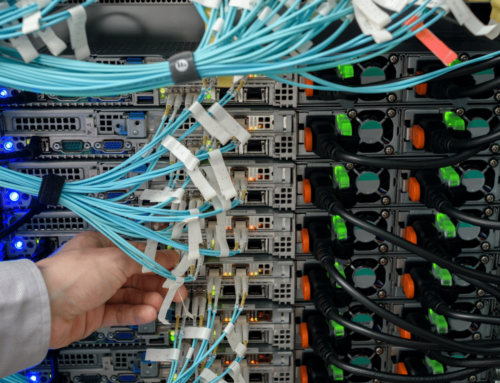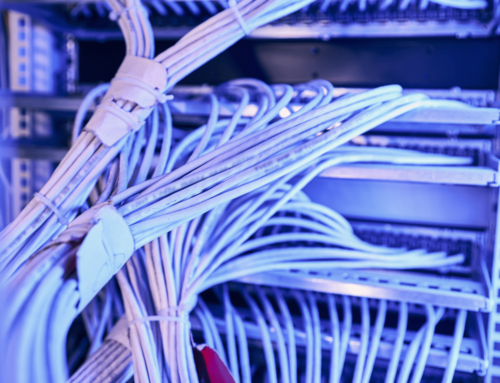Proactive maintenance is a strategy based on identifying the root causes leading to equipment failure and using this information to anticipate or reduce breakdowns or performance degradation and extend equipment life. Rather than emphasizing the symptoms of failure, proactive maintenance differentiates itself by focusing on the factors contributing to equipment failure. More than any other maintenance approach, it strives to extend equipment lifespans and minimize repetitive repairs.
Data collection, tracking, and analysis are essential to successfully implementing a proactive maintenance plan, and a good computerized maintenance management system (CMMS) can provide the engine behind a successful deployment.
The proactive philosophy also incorporates design improvements that minimize the impact of these contributing factors on the component or equipment lifespan.
Proactive Maintenance Advantages
Proactive maintenance creates many of the same benefits as preventive and predictive maintenance approaches, including decreased malfunctions and downtime, minimized repair costs and increased equipment longevity. These advantages all contribute directly to bottom-line performance.
Automated monitoring practices associated with proactive maintenance can further reduce the load on technical personnel by minimizing troubleshooting and inspection time allotments.
Proactive maintenance provides additional benefits as a result of the data-centric, root-cause emphasis. By analyzing and positively identifying the causes of failure, proactive maintenance precipitates a continuous improvement cycle. Equipment design, installation, and maintenance processes can all be elevated over time to optimize equipment life and performance further.
Preventing the same problem from occurring is essential for maintaining equipment reliability throughout its useful life. Rather than merely triggering corrective actions, proactive maintenance software can be used to predict potentially related problems and identify meaningful improvement opportunities that prevent a recurrence. This farsighted use of system intelligence leads to ongoing enhancement and cost reduction.
Proactive Maintenance Disadvantages
Proactive maintenance requires a fundamental change in maintenance philosophy that continues to produce tangible benefits and savings as it evolves. What is sometimes perceived as the drawbacks or disadvantages of proactive maintenance are the initial investments in technology, equipment and training.
Because developing a maintenance strategy from the root-cause perspective is contrary to many existing programs, the conversion to proactive maintenance can be a long and arduous undertaking. For these reasons, a robust long term organizational commitment and a shift in philosophy from cost-centric to profit-centric maintenance is a vital ingredient.
Setting up a Proactive Maintenance Plan
Given the complexity of proactive maintenance implementation, careful planning and organization are needed to ensure a successful transition. The planning process should begin with establishing program goals, leadership, budgets, and training strategies.
Planning the scope of proactive maintenance implementation will make it easier to determine what new tools and equipment will be required and what additional utilities or resources will be needed to support them. This aspect of planning might be limited by the level of root cause awareness that exists before implementation.
The next steps in establishing the revised maintenance plan include a selection of the proactive maintenance software package and the baselining of existing conditions. Equipment life span history, failure reporting, spare part usage and established preventive maintenance cadences will play an essential role in baselining the current state. Having the appropriate software tools available will facilitate this transition as the computing horsepower begins to connect the dots between root causes and effective strategies and solutions.
The next phase of baselining will include real-time measurement and monitoring of input factors to identify existing problems, establish nominal operating levels and prepare for deployment. The baselining process is also vital for quantifying improvements over time.
Moving from planning into implementation requires meticulous coordination to ensure equipment uptime is maintained even as new data collection practices identify root cause reduction strategies. As this transition evolves, it is essential to prioritize the time, money and energy spent on proactive solutions that can demonstrate program effectiveness and accelerate buy-in. Proactive maintenance software will gradually facilitate a favorable tradeoff between labor-intensive reactive tasks and targeted cost-effective, proactive tasks.
Proactive Maintenance Solutions
The breadth of tools required for proactive maintenance support is dependent upon the level of implementation and the potential sources of failure being considered. Screening tools like thermal imaging equipment can be useful for investigating and quantifying heat-related conditions.
Other tests and measurement tools can evaluate humidity, vibration, electrostatic discharge or any number of different factors that are influential to equipment performance and reliability. A comprehensive, proactive maintenance solution might also include wireless sensors and other advanced monitoring devices to connect these input factors to equipment performance.
Determine which factors are right for you when it comes to hosting your project. Do you expect an influx of traffic? Then scalability is important. Do you want a more hands-off approach to hosting? Then perhaps managed hosting is the way to go.
While it is nearly impossible to anticipate every compliance obstacle that may come your way, you should be prepared to handle as many of them as possible. Being proactive now means that you’ll enjoy peace of mind later. If you have any questions on compliance or need any assistance CB Tech Group is here for you. Like we said earlier it is better to be prepared beforehand then later.






